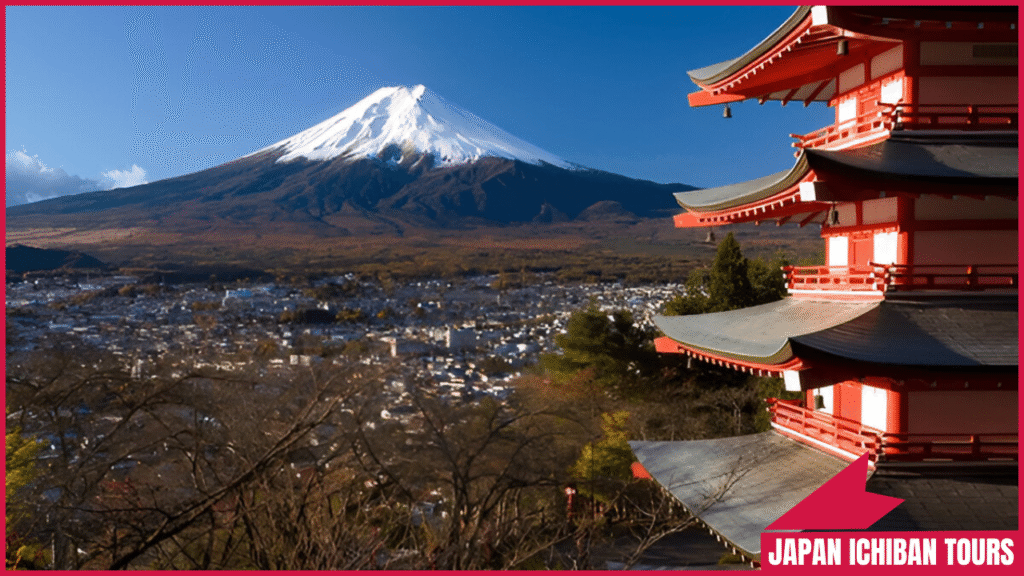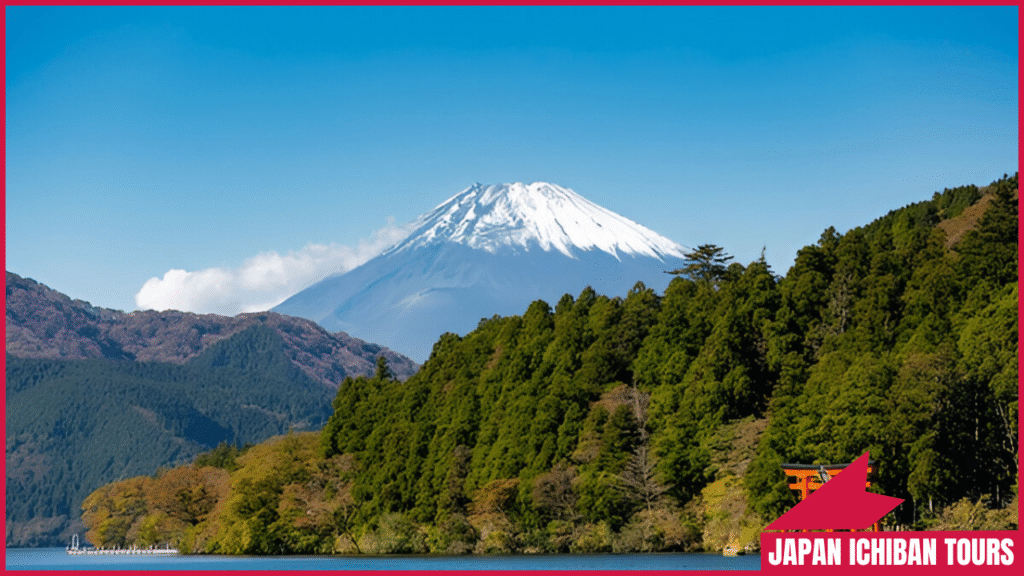
Hakone, a scenic gem in Japan’s Fuji-Hakone-Izu National Park, is renowned for its hot springs, volcanic landscapes, and stunning views of Mount Fuji. Just 90 minutes from Tokyo, it’s a perfect blend of nature, culture, and relaxation, making it an ideal getaway in 2025.
This guide highlights the top activities and attractions in Hakone, from iconic landmarks to hidden treasures, with practical tips to enhance your experience.
Hakone’s appeal lies in its diverse offerings: rejuvenating onsens, vibrant art museums, and natural wonders like Lake Ashi. In 2025, expect improved English signage, seasonal festivals, and optimal Mount Fuji views in winter (December–February). Explore Japan Like Never Before: Top Travel Tips & Itineraries for 2025
The Hakone Freepass (~$40–$50 for 2–3 days) simplifies travel with unlimited rides on buses, trains, cable cars, and boats, plus discounts at attractions. Whether you’re seeking relaxation or adventure, Hakone delivers.
Location: Hakone-Yumoto, Gora, Sengokuhara
Cost: ~$10–$30 (public onsens), ~$100–$300/night (ryokan with private onsens)
Why Do It: Hakone is famous for its hot springs, fueled by Owakudani’s volcanic activity. Soaking in mineral-rich waters at places like Tenzan Onsen (~$13, tattoo-friendly) or Hakone Yuryo (~$15) offers relaxation and cultural immersion. Many ryokans, like Hakone Ginyu, provide private onsen experiences with Mount Fuji views.
Cultural Note: Onsens are typically gender-separated, and nudity is standard. Check tattoo policies, as some facilities are restrictive.

Location: Owakudani Valley
Cost: ~$15 (included with Hakone Freepass)
Why Do It: The Hakone Ropeway offers a scenic cable car ride from Sounzan to Togendai, with a stop at Owakudani, the “Great Boiling Valley.” This volcanic site, formed 3,000 years ago, features steaming vents and sulfurous pools. Try the famous black eggs (kuro-tamago, ~$5 for 5), boiled in hot springs, said to add seven years to your life.
Note: Avoid eating more than 2.5 black eggs, as local superstition suggests it brings bad luck.
Location: Lake Ashi
Cost: ~$10 (included with Hakone Freepass)
Why Do It: Lake Ashi, a caldera lake formed by Mount Hakone’s eruption, offers stunning views of Mount Fuji on clear days. Take a 30-minute “pirate ship” cruise from Togendai to Moto-Hakone for a fun, family-friendly experience. The lake’s southern edge frames the iconic Fuji-and-torii-gate view.
Pro Tip: Combine with a visit to Hakone Shrine for a half-day itinerary.
Location: Gora
Cost: ~$15 (discount with Hakone Freepass)
Why Do It: Japan’s first outdoor art museum blends modern sculptures with Hakone’s natural beauty. Featuring works by Picasso, Henry Moore, and Japanese artists, it includes a hot spring foot bath for relaxation. The stained-glass Symphonic Sculpture tower offers panoramic views.
Note: Families love the interactive art spaces, but prioritize early visits to avoid crowds.
Location: Moto-Hakone, Lake Ashi
Cost: Free
Why Do It: Hakone Shrine, dating back to 757 AD, is a spiritual highlight with its iconic red torii gate in Lake Ashi, a symbol of peace and luck. A 10-minute walk leads to Kuzuryu Shrine, linked to legends of a nine-headed dragon, known for blessings in love and prosperity. Both offer serene walks through cedar-lined paths.
Pro Tip: Pair with a lake cruise for a cultural and scenic morning.
| Attraction | Location | Cost | Highlight | Best Time to Visit |
|---|---|---|---|---|
| Onsen | Hakone-Yumoto, Gora | $10–$30 | Hot spring relaxation | Afternoon (1–4 PM) |
| Owakudani | Owakudani Valley | $15 | Volcanic views, black eggs | Early morning (8–10 AM) |
| Lake Ashi | Lake Ashi | $10 | Pirate ship cruise | Early morning/late afternoon |
| Open-Air Museum | Gora | $15 | Outdoor art, foot bath | Midweek mornings |
| Hakone Shrine | Moto-Hakone | Free | Red torii gate | Early morning (7–8 AM) |
Location: Hakone Hachiri
Cost: Free
Why Do It: Walk a historic section of the Edo-period Tokaido Road, lined with ancient cedars. The trail from Hakone-Yumoto to Moto-Hakone (~2–3 hours) offers a moderate hike with cultural significance.
Location: Sengokuhara
Cost: ~$18 (discount with Hakone Freepass)
Why Do It: This museum showcases 10,000 pieces, including Impressionist paintings and Japanese ceramics, set against Hakone’s hills. Its hot spring foot bath and seasonal exhibits make it a cultural gem.
Location: Gora
Cost: ~$10–$20
Why Do It: Participate in a traditional tea ceremony in a serene garden setting. Learn to whisk matcha and enjoy wagashi sweets, a quintessential Japanese experience.

The Hakone Freepass (~$40–$50) covers unlimited rides on Hakone Tozan Train, buses, ropeway, and Lake Ashi cruises. Buy it at Odawara or Shinjuku Station. The Romancecar from Shinjuku to Hakone-Yumoto (~$20, 1.5 hours) requires an express fee.
Purchase an eSIM (Airalo, Ubigi, ~$10–$20 for 1–2 GB daily data) for navigation. Download Maps.me and Google Translate for offline use.
Popular sites like Owakudani and Lake Ashi get busy. Visit early (7–10 AM) or late (4–6 PM) to avoid tour groups. Weekdays are quieter than weekends.
Hakone’s transport network is efficient but can be complex. Use the Hakone Freepass map and Odakyu website for planning. Koban (police boxes) at Hakone-Yumoto Station offer assistance.
Mount Fuji visibility is best in winter but can be obscured by clouds. Check forecasts and prioritize early morning visits. The ropeway may close during high winds or maintenance (December–February).
English signage is improving, but learn basic phrases like “Konnichiwa” (hello) or “Arigato” (thank you). Google Translate’s camera feature helps with signs and menus.
Hakone in 2025 is a captivating blend of natural beauty, cultural depth, and relaxation. From soaking in onsens to cruising Lake Ashi and exploring Owakudani’s volcanic wonders, these top activities offer something for every traveler. Pair them with art museums, historic shrines, or scenic hikes for a well-rounded adventure. With the Hakone Freepass and these insider tips, your Hakone visit will be a seamless and unforgettable journey.
What are Hakone’s top attractions in 2025?
Owakudani, Lake Ashi, Hakone Open-Air Museum, Hakone Shrine, and onsens like Tenzan are must-visits for their unique blend of nature and culture.
How can I see Mount Fuji in Hakone?
Visit Owakudani or Lake Ashi early morning or late afternoon in winter (December–February) for the best visibility. Check weather forecasts.
What’s the best way to get around Hakone?
Use the Hakone Freepass (~$40–$50) for unlimited rides on trains, buses, ropeways, and boats. Rent a bike (~$10/day) for shorter distances.
How can I experience Hakone’s culture?
Soak in an onsen (~$10–$30), join a tea ceremony at Gora Park (~$10–$20), or visit Hakone Shrine for spiritual history.
When’s the best time to visit Hakone?
Autumn (October–November) for foliage and winter (December–February) for Mount Fuji views offer ideal scenery and fewer crowds.

Discover Japan Like Never Before 🇯🇵








Copyright © 2025 Japan Ichiban Tours | made with ❤️ by ideavire.com
Please select a template first

1 Comment
Kamakura Day Trip Itinerary – Shrines & Beaches in 2025 · September 20, 2025 at 7:05 pm
[…] The Kamakura Free Environment Ticket (~$7) offers unlimited train and bus rides, simplifying exploration. With cultural landmarks like the Great Buddha and scenic Yuigahama Beach, Kamakura is a must-visit for history buffs, nature lovers, and beach enthusiasts. What to Do in Hakone: Top Activities & Attractions in 2025 […]